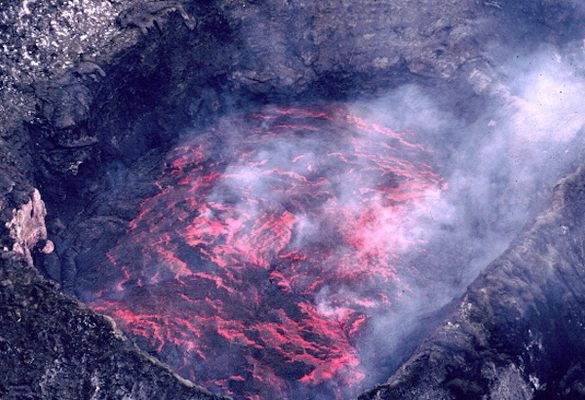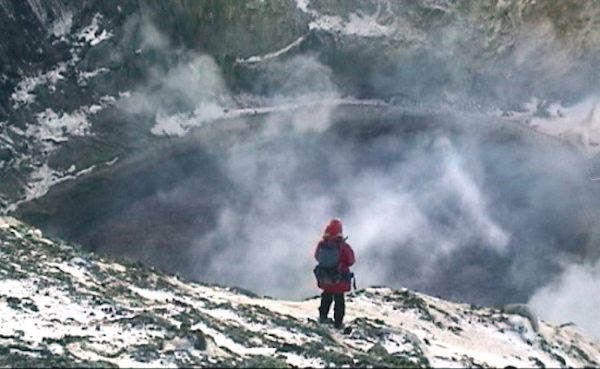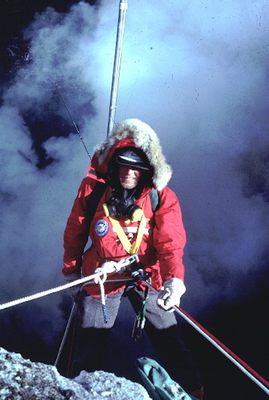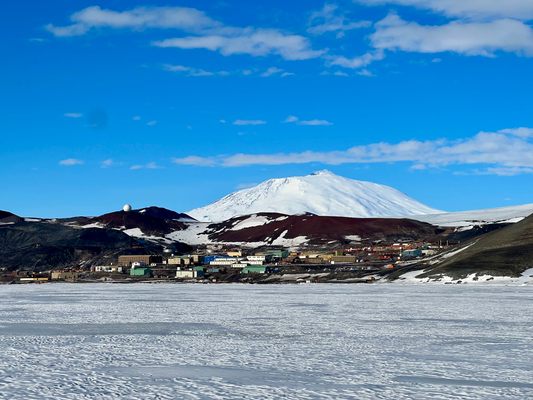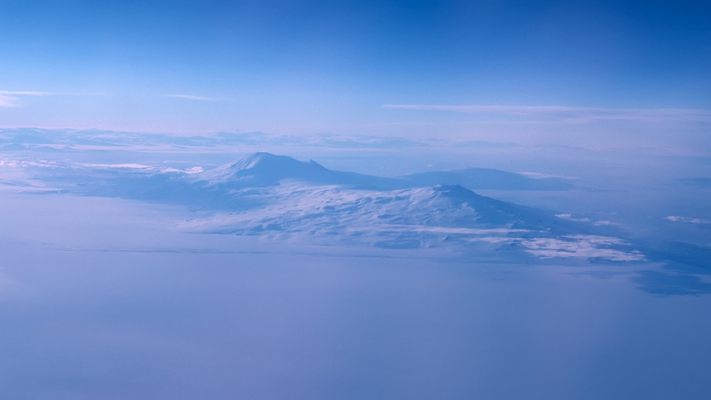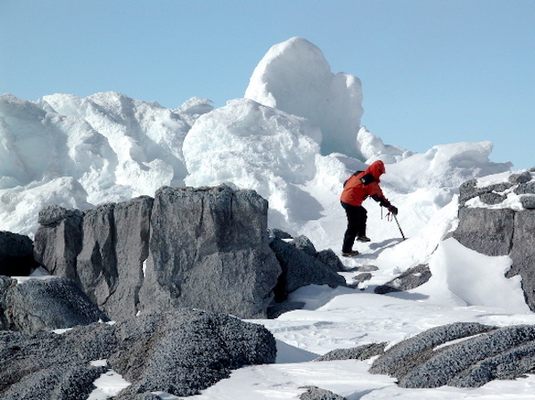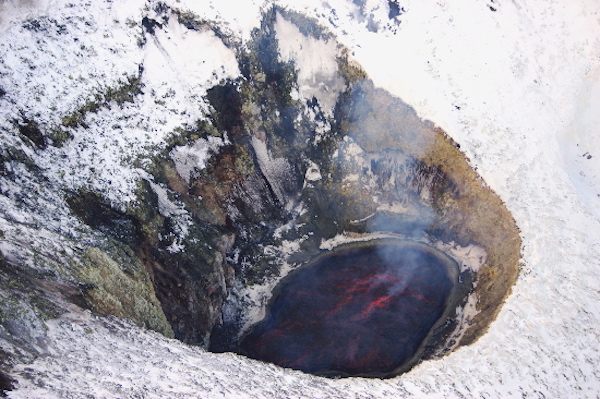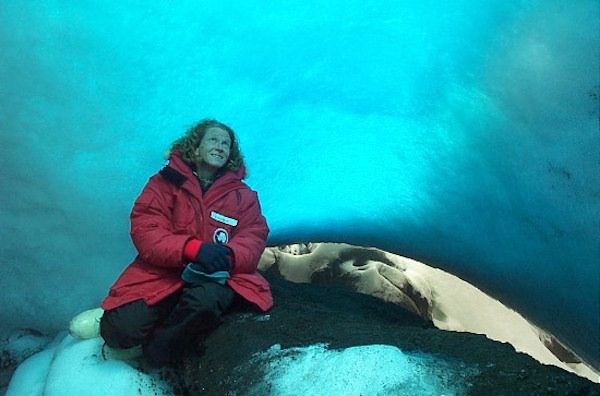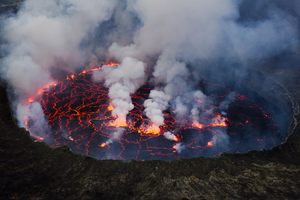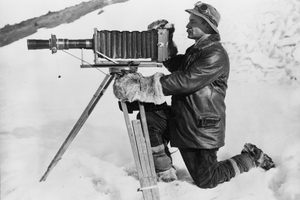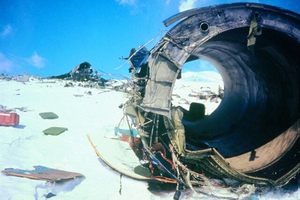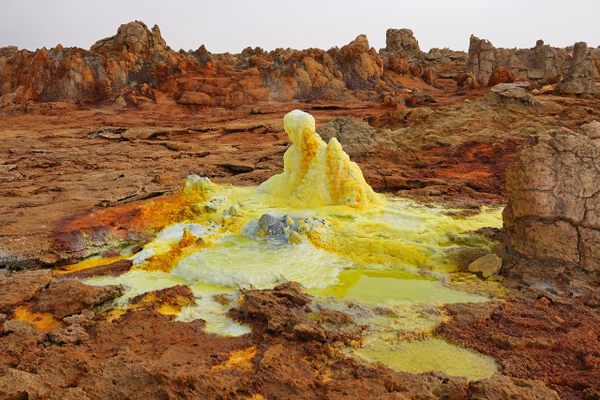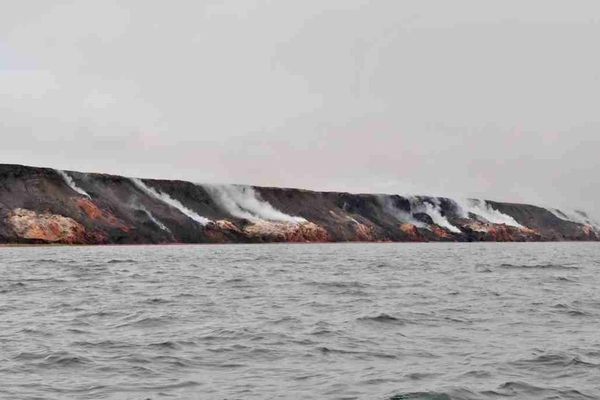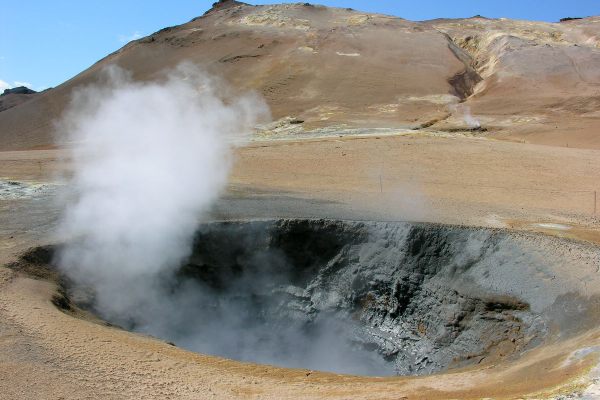About
Erebus. It's a good name for the volcano. In Greek myth, Erebus was the son of the god Chaos, and his mother was Gaia or Earth. Erebus was made of darkness and shadow, and he filled the corners of the world with his darkness.
Currently, the most active volcano in Antarctica and the southernmost active volcano on Earth, the Mount Erebus volcano features a 1,700-degree Fahrenheit lava lake, a swirling pool of magma that may be many miles deep: one of only five such lava lakes that exist in the world.
While the inside of Mount Erebus may be extremely hot, outside of it, one would quickly freeze to death in the Antarctic temperatures. Riddling the side of the snow-covered volcano are ice caves, carved out by the escaping volcanic gases. Because of the gas, the ice caves stay a consistent 32 degrees, making them a likely spot for undiscovered extremophiles. The volcanic gases heat their way through these ice caves and escape into the air to form enormous 60-foot chimneys of ice, or "fumaroles," with deadly volcanic gases pouring out from their tips.
Discovered in 1841 by polar explorer Sir James Clark Ross, it was easy to identify Mount Erebus as a volcano as it was erupting at the time. (Ross Island, which Mount Erebus is on, is named after him as is the Ross Ice Shelf.) Later, polar explorer Ernest Shackleton would make the first ascent of Mount Erebus between 1907-1909 on the Nimrod Expedition.
One of the things that makes Erebus significant - and the reason it is the location of the Mount Erebus Volcano Observatory, or "MEVO" - is that Erebus is one of only a few consistently active volcanoes in the world. Rather than lying dormant and then spectacularly erupting once every few hundred years, though it does erupt on occasion too, Mount Erebus is always on, bubbling, releasing gas and flinging ten foot wide "volcanic bombs" - hunks of molten rock which sometimes explode on landing - through the air. For a volcanologist, Mount Erebus is a dangerous but dreamy research site.
Mount Erebus is also the site of a famous and tragic air disaster. An Air New Zealand DC-10 airliner on a sightseeing flight became lost in a whiteout and crashed into the side of the volcano on 28 November 1979, killing all 237 passengers and 20 crew. Famed explorer Sir Edmund Hillary was supposed to have been on board but canceled at the last moment.
Debris from the crash is still visible on the volcano, despite an extensive recovery and clean up the mission. The unclaimed remains of the crash victims are entombed at a memorial at the Waikumete Cemetery in West Auckland, New Zealand where every year a wreath is laid in memory.
The massive polygenetic stratovolcano spews out an average of 80 grams of gold a day, all of it dissolved in the volcanic gases.
Related Tags
Community Contributors
Added By
Published
December 28, 2015
Sources
- Wikipedia: Mount Erebus: http://en.wikipedia.org/wiki/Mount_Erebus
- Mount Erebus Volcano Observatory: http://erebus.nmt.edu/
- ScienceBlogs: Volcano Profile: Mt. Erebus: http://scienceblogs.com/eruptions/2009/07/volcano_profile_mt_erebus.php
- Smithsonian: "Antarctica Erupts!": http://www.smithsonianmag.com/science-nature/antarctica.html
- Antarctic Connection: Mount Erebus: http://www.antarcticconnection.com/antarctic/science/mterebus.shtml
- https://en.wikipedia.org/wiki/Nimrod_Expedition





